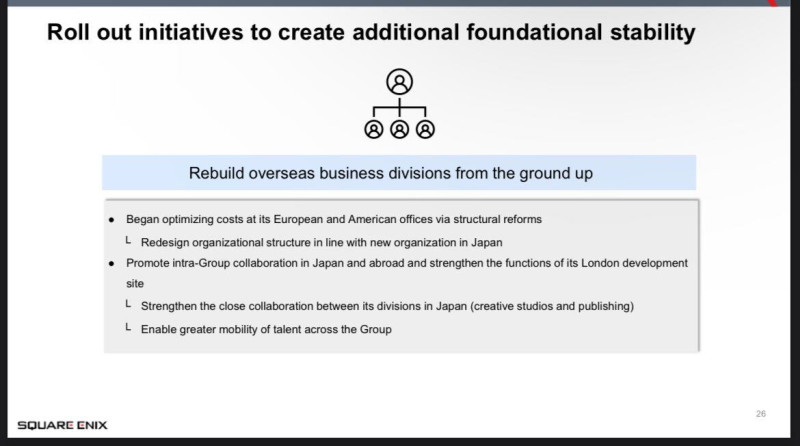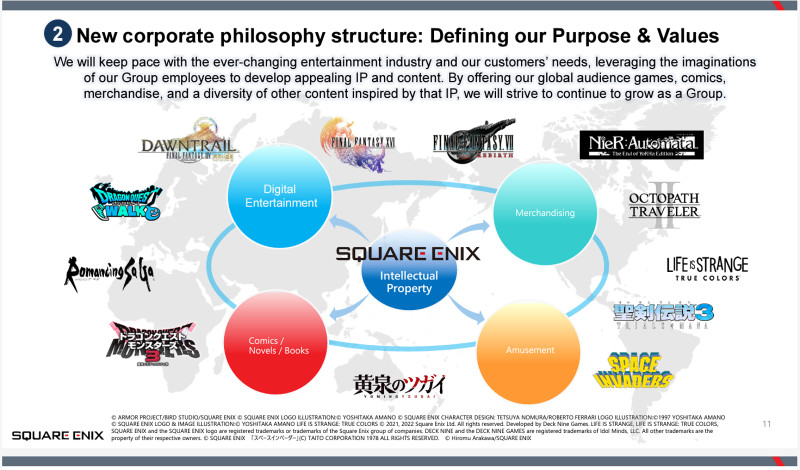The latest iteration of OpenAI’s conversational model, ChatGPT-4o (“o” for “omni”) has arrived, bringing with it a host of new features that promise to revolutionize the way we interact with AI. Building on the success of its predecessors, GPT-4o introduces significant advancements in language understanding, contextual…
BirdDog Next Gen Cameras are Here – Videoguys

Experience category-defining smooth, controllable movement and stunning image quality with X1 & X1 Ultra, with Halo Tally and AI Tracking for live production magic.
Say hello to seamless connectivity with NDI® | HX3 and Wi-Fi, ensuring you stay at the cutting edge of technological excellence.
An industry-first e-ink display that not only tells you everything you need to know, but stays brilliantly visible even when the camera is off!
X1 & X1 Ultra decode NDI|HX2 / NDI|HX3 at the same time! Say goodbye to guesswork with confidence monitoring or teleprompting output from camera.
Note: Black Models are in stock/shipping right now, White Models are coming soon!
 |
Tally Light. It’s a halo Effect. Professional results need professional tools. X1 and X1 Ultra sport the most visible and effective Tally system available. Up front with a large, daylight visible border, and out back with an interchangeable, illuminated numbering system. Your cast and crew will always know where to look to keep your audience engaged and your look polished. |
|
AI Tracking. We welcome our AI overlords. Every production could use a little help from a friend. The X1 and X1 Ultra keep your subject in focus with AI tracking technology, intelligently following your subject’s movements in real-time. Whether you’re orchestrating a live event, capturing spontaneous moments in a hybrid environment, or hunting down sports action, AI tracking helps you get well framed – without needing an octopus to run the controller |
 |
 |
NDI® | HX3. Enhanced Reliability on More Networks. The X1 and X1 Ultra deliver superior network performance via NDI® | HX3 integration. You get significantly reduced network impact and excellent image quality, meaning its more friendly in more network environments. BirdDog’s NDI® | HX3 delivers quality and performance you can count on |
|
Integrated NDI® | HX Decoder. Let’s hook up. The X1 and X1 Ultra are the world’s first PTZ cameras featuring an NDI® | HX* Decoder designed specifically for confidence monitoring, return feeds, or teleprompter usage. We’ve pulled all this connectivity into a single cable, radically simplifying how you interface with your equipment. Less gear. Less hassle. Whether you’re broadcasting live or delivering a CEO address, the integrated NDI HX decoder enables more brilliance with less setup |
 |
 |
Wi-Fi.
Connected but not connected. |
|
E-Ink Label. Get Inked. The always-on e-Ink label on the X1 and X1 Ultra are game-changers. From network addresses for easy access to controls, this cool feature ensures that your set-up is clear and each camera easily identifiable even when the power is off |
 |
BirdDog MAKI Ultra Box Camera
|
Available in 12x & 20x BLACK 12x IN STOCK! WHITE & BLACK 20x COMING SOON! |
- 4K60 Flexibility: MAKI Ultra features superior image quality, ensuring stunning visuals for every production, offering UHD quality at 60fps.
- HALO Tally: MAKI Ultra sports the most visible and effective Tally system on the market, up front with a large, daylight visible border.
- Compact, yet mighty: A full suite of cutting edge functions cleverly packaged into an easily mountable camera
- NDI® | HX3: enjoy reliable performance on more networks via NDI® | HX3.
- Super-Fast Autofocus: Featuring the latest laser-guided autofocus system, your shots will always be in focus.
- On-board Buttons: Easily make on-the fly changes to your framing or exposure
- Serial Control: Take control effortlessly with older control protocols, seamlessly integrating with your existing infrastructure.
- USB Webcam: MAKI Ultra feature USB-C for connecting directly to Zoom, Teams, and most apps that supports a USB UVC input.
- Control support: MAKI Ultra ships with its own IR remote, plus hardware control support for BirdDog PTZ Keyboard, Skaarhoj, and more
Paul Roscoe, Chief Executive Officer, CLEW Medical – Interview Series
Paul Roscoe is the Chief Executive Officer of CLEW Medical. Prior to joining Clew, Mr Roscoe was CEO of Trinda Health, and was responsible for establishing the company as the industry leader in quality oriented clinical documentation solutions. CLEW Medical offers hospitals, healthcare systems and intensive…
Microsoft’s Leap Towards Fault-Tolerant Quantum Computing with Azure Quantum
Quantum computing, with its promise of solving complex problems that classical computers struggle with, has been a topic of intense research and development. Microsoft, a key player in the quantum computing field, is making significant strides toward achieving fault-tolerant quantum computing at scale through its Azure…
The Growing Threat of Data Leakage in Generative AI Apps
The age of Generative AI (GenAI) is transforming how we work and create. From marketing copy to generating product designs, these powerful tools hold great potential. However, this rapid innovation comes with a hidden threat: data leakage. Unlike traditional software, GenAI applications interact with and learn…
Square Enix Will Begin Layoffs As Part Of ‘Structural Reforms’ This Week
Square Enix, the developer-publisher behind this year’s Final Fantasy VII Rebirth, is set to lay off an unspecified number of employees across its U.S. and European offices, which are headquartered in California and the United Kingdom, respectively, this week. According to those in attendance, Square Enix president Takashi Kiryu delivered this news in a company-wide meeting, as first reported by VideoGamesChronicle.
Layoffs such as these were suspected following Square Enix’s latest financial earnings report, which includes a three-year company reboot plan with an “aggressive” multiplatform release strategy after a slide mentioned “structural reforms.” You can see the slide below:

As you can see above, as part of Square Enix’s plan to rebuild its overseas business divisions from the ground up, the company “began optimizing costs at its European and American offices via structural reforms.” After more than 10,000 layoffs across game studios and publishers this year, it’s easy to read between the lines – structural reforms sound a lot like “layoffs,” and now VGC has confirmed as much.
The publication reports these layoffs will happen over the course of the next month, with those affected set to find out this week. The total number of expected layoffs is not known, but VGC‘s sources say staff was told it will mostly affect those working in publishing, IT, and Square Enix’s Collective indie games division.
U.K. employees laid off will enter into a “one-month consultancy period” in accordinace with local U.K. law, while affected U.S. staff could be out of their jobs potentially before the end of the month.
These layoffs join a string of other disheartening 2024 layoffs and closures, which now total more than 10,000 in just the first five months of the year.
Earlier this month, Xbox closed four Bethesda studios, including Hi-Fi Rush developer Tango Gameworks and Redfall studio Arkane Austin. Take-Two Interactive closed Rollerdrome studio Roll7 and Kerbal Space Program 2 studio Intercept Games alongside major layoffs to its indie-publisher Private Division label. That same week, we learned Deliver Us Mars developer Keoken Interactive had laid off nearly its entire staff.
Elsewhere in the year, EA laid off roughly 670 employees across all departments, resulting in the cancellation of Respawn’s Star Wars FPS game. PlayStation laid off 900 employees across Insomniac, Naughty Dog, Guerrilla, and more, closing down London Studio in the process, too. The day before, Until Dawn developer Supermassive Games announced it laid off 90 employees.
At the end of January, we learned Embracer Group had canceled a new Deus Ex game in development at Eidos-Montréal and laid off 97 employees in the process. Also in January, Destroy All Humans remake developer Black Forest Games reportedly laid off 50 employees and Microsoft announced it was laying off 1,900 employees across its Xbox, Activision Blizzard, and ZeniMax teams, as well. Outriders studio People Can Fly laid off more than 30 employees in January, and League of Legends company Riot Games laid off 530 employees.
Lords of the Fallen Publisher CI Games laid off 10 percent of its staff, Unity will lay off 1,800 people by the end of March, and Twitch laid off 500 employees.
We also learned that Discord had laid off 170 employees, that layoffs happened at PTW, a support studio that’s worked with companies like Blizzard and Capcom, and that SteamWorld Build company, Thunderful Group, let go of roughly 100 people. Dead by Daylight developer Behaviour Interactive also reportedly laid off 45 people, too.
[Source: VideoGamesChronicle]
What to Do When Your Website Faces a Major Software Change
The web is in a constant state of change. What we build today will inevitably need to adapt tomorrow. And the challenge of keeping up is only growing.
Modern websites have multiple dependencies. They include everything from PHP, your content management system (CMS), to JavaScript libraries. Even the classic 5-page brochure site can’t escape their clutches.
None of these items are immune to change. Sometimes, those changes add extra work to our plates.
The situation presents a multitude of challenges for developers. We may need to refactor a feature’s code. Or go through an arduous manual testing process. Both involve a lot of time and money.
So, how do you carry out such an endeavor? Here are some tips for managing software changes that impact your website.
Assess the Impact of the Change
On the surface, some software changes may not seem so serious. For example, updating your WordPress install. It’s often a routine task – until it’s not.
Sometimes, a theme or plugin undergoes an overhaul. The new version could mean changes to your implementation. Thus, you won’t want to click the “update” button until you assess what’s happening.
You can learn a lot by reading documentation regarding the change. For example, a changelog may offer vital information.
Hopefully, you’ll gain a clearer picture of what steps you need to take. If not, it’s time to contact the developer or post in a support forum.
We’re also assuming you have intimate knowledge of your website. That includes an understanding of how the site was built – along with its dependencies.
What if you inherited the website from another developer? You may need to dig a little deeper to gauge the impact of an update.

Create a Staging Environment for Testing
It’s always worth repeating: Don’t implement critical updates without testing. You run the risk of something breaking in the process. Not fun at all.
A staging environment will allow you to test without risk. It’s an exact copy of your website, hosted locally or on a remote server.
Think of a staging environment as a playground for experimentation. You can turn on debugging or install development tools to catch any errors. Plus, you can add and remove components like plugins or libraries.
You might make a mistake or two – but that’s OK. There’s always an opportunity to reverse your changes or start fresh.
A staging environment is perfect for process-oriented updates – like upgrading to a new version of PHP. You’ll have a separate space to investigate and repair each issue. Again, it’s not something you want to do on a production site.
Your web host may offer a staging option. That may be your best bet. Ideally, you’ll want to use a server configuration that is as close as possible to your production environment.
If that’s not possible, try to get as close as you can with a local install. Having a place to test is the most important thing.

Take Notes as You Test
Some web hosts allow you to push your changes from staging to production. However, this isn’t always an option. Therefore, you’ll want to take notes during testing.
There are a lot of steps involved with software changes. For example, you may have implemented several code tweaks. A crucial item could easily get lost in the process. That might be a problem when it’s time to launch.
Having some project documentation on hand can be helpful. It will serve as a reference as you deploy any changes.
What should you include in your notes? Here are a few ideas:
- A list of changed files;
- Changed server or CMS settings;
- Items (like plugins or libraries) that have been added or removed;
These examples are a starting point. Feel free to document anything you think is relevant to your project. You’ll be glad you took the initiative when looking back! This step lessens the chances of making a mistake.
Oh, and be sure to back up your site before making changes. That can be a lifesaver should something go awry.

Prepare for Launch
Now that you’ve tested (and taken good notes), it’s full speed ahead! Much of what happens next will depend on the scope of your project. However, there are a few best practices worth following.
The first is to schedule a time to make the required changes. Try to do so when user impact will be minimal. Be sure to give yourself enough time for deployment and testing. You’ll also want to alert any stakeholders of what’s happening.
Next, create a checklist of tasks. List each step of the process in order. It’s a simple thing – but handy for keeping track of progress.
Also, make sure you have access to everything you need. For example, you may need permission to overwrite files on the web server. Or the account details for a third-party provider.
And don’t forget about any two-factor authentication tied to client accounts. You may need to coordinate a time to gain access.
Once you’re fully prepared, you can move forward with confidence.

Turn Big Changes into No Big Deal
Updates to system software and site components could mean extra work. It’s a staple of website maintenance. And you never know when something new will pop up.
Web designers need all the help they can get. As websites have more moving parts, so does the likelihood of something major coming along.
It may sound a bit scary – but do not worry! A solid process can simplify matters.
Assess your situation, test on a staging environment, and document your work. Prepare for the change as you would a job interview. When something comes up, you’ll be able to handle it gracefully.
Related Topics
Top
Microsoft Unveils Groundbreaking €4 Billion AI Investment in France
In a historic move, Microsoft has announced its largest investment to date in France, solidifying the tech giant’s commitment to accelerating the adoption of artificial intelligence and fostering digital innovation within the country. During the prestigious Choose France summit, the company unveiled a sweeping €4 billion…
Intel’s Aurora achieves exascale to become the fastest AI system
Intel, in collaboration with Argonne National Laboratory and Hewlett Packard Enterprise (HPE), has revealed that its Aurora supercomputer has exceeded the exascale computing threshold reaching speeds of 1.012 exaflops to become the fastest AI-focused system. “The Aurora supercomputer surpassing exascale will allow it to pave the…
Square Enix Will ‘Aggressively’ Pursue Multiplatform Strategy In Company Reboot
Square Enix is rebooting itself, “aggressively” pursuing a multiplatform strategy that includes PlayStation, Xbox, Nintendo, and PC in the process. This comes from the company’s latest financial earnings report, which details Square Enix’s three-year reboot plan for long-term growth.
Within that three-year reboot plan, Square Enix lists four pillars:
- Enhance productivity by optimizing the development footprint in the Digital Entertainment (DE) segment
- Diversify earnings opportunities by strengthening customer contact points
- Roll out initiatives to create additional foundational stability
- Strike a balance between shareholder return and growth investment when allocating capital

As part of this plan, Square Enix “will aggressively pursue a multiplatform strategy that includes Nintendo platforms, PlayStation, Xbox, and PCs,” according to the financial report. “Especially, in regards to major franchise and AAA titles including catalog titles, it will build an environment where more customers can enjoy these titles,” it continues, possibly alluding to multiplatform releases for future Final Fantasy games and more.
This strategy switch-up follows reports that Final Fantasy VII Rebirth, a PlayStation 5-exclusive RPG that launched in February underperformed; Final Fantasy VII Rebirth followed in the footsteps of its predecessor, Final Fantasy VII Remake, which launched exclusively on PlayStation 4 in 2020, and Final Fantasy XVI, which hit PS5 last year (although it’s set to release on PC sometime in the future).
Square Enix also says it will “devise a platforms strategy for SD [Smart Devices/PC Browser portfolio] that includes not only iOS and Android, but also the possibility of PC launches. It continues, “Furthermore, the Group will strive to maximize the acquisition of new users when launching a title and that of recurring users after starting management of game operation.”
[embedded content]
Throughout the financial report, Square Enix uses the word “fun” as a focal point for the future development of its games. It says it wants to focus on the development of titles “delivering ‘fun’ that only [Square Enix] can create and build.”
In terms of numbers, Square Enix’s net sales are up 3.8% year-over-year at $2.28 billion this year, with digital entertainment sales up 2.5% at $1.59 billion. However, its operating income – $209 million – is down nearly 27%.
These numbers and subsequent strategy shift aren’t surprising, considering at the end of April, Square Enix canceled some of its in-development games to be “more selective and focused,” which lines up with its new philosophy. This likely means we’ll be seeing more titles like Dragon Age XI, Final Fantasy XVI, and Final Fantasy VII Rebirth on various platforms and less games like Foamstars and The DioField Chronicle. Only time will tell, though, and Square Enix thinks it will take three years for this company reboot.
For more, read Game Informer’s Final Fantasy VII Rebirth review, and then read Game Informer’s Final Fantasy XVI review. After that, read about Final Fantasy XIV’s upcoming Dawntrail expansion, which is due out this July.
What are your thoughts on Square Enix’s new strategy?Let us know in the comments below!
